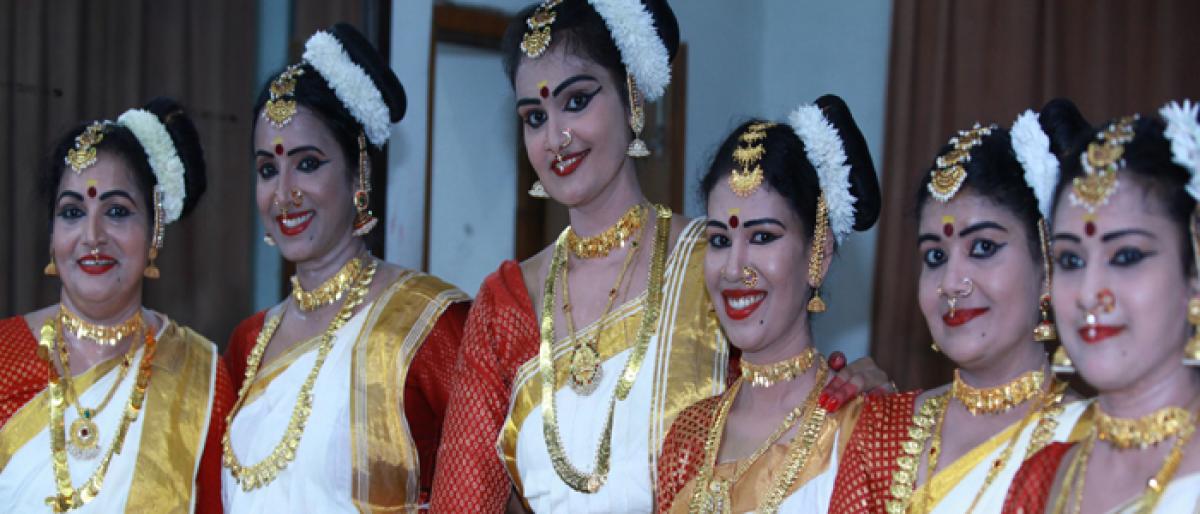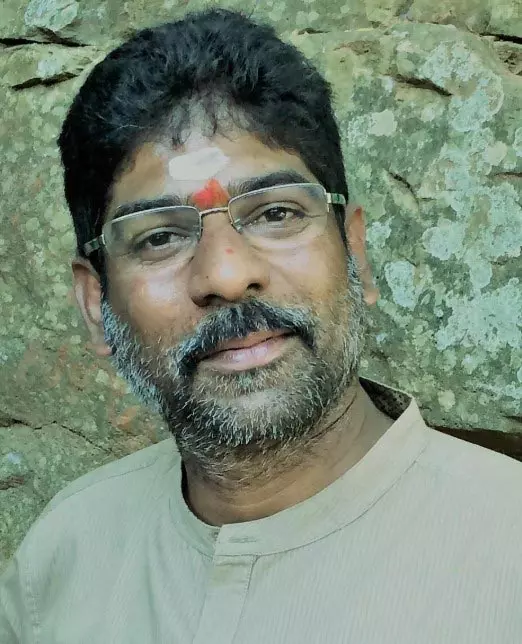Live
- PM Modi to arrive in Vizag shorty, to participate in road show
- Manifesting Good Things: Simple Steps to Attract Positivity in Life
- Telangana High Court Accepts KTR's Lunch Motion Petition in Formula-E Case
- Try these easy-to-make quick recipes
- Bigg Boss 18: Unexpected Twist in Ticket to Finale Task, Vivian and Chum in the Spotlight
- Online DBA Programs See Record 30% Growth, Strong Demand from South Indian States, reveals College Vidya’s study
- IIT Bombay hosts stellar academic research at ATMAN 2.0
- ‘Pushpa 2: The Rule’ extended by 20 minutes for Sankranthi release
- ‘Drinker Sai’ positive response helped me to set stage for future: Film hero Dharma
- ‘Toxic’ glimpse: Yash’s swag and charm
Just In

They are everywhere From Murugan Tea Stall in the dusty streets of Secunderabad to the august interiors of the corridor of power in Hyderabad, they form an integral part of the megalopolis There are thousands of them working in hundreds of industrial units on the outskirts, in railway stations, small and big hotels, schools, colleges, hospitals, software companies, armed forces, business establi
They are everywhere. From Murugan Tea Stall in the dusty streets of Secunderabad to the august interiors of the corridor of power in Hyderabad, they form an integral part of the megalopolis. There are thousands of them working in hundreds of industrial units on the outskirts, in railway stations, small and big hotels, schools, colleges, hospitals, software companies, armed forces, business establishments, real estate ventures and in government and private organisations.
They are Keralites or Malayalees, fondly called as ‘Mallus’, who believe in the dignity of labour and are game for any sort of work. These beef-eating, mundu-clad people from God’s Own Country contribute a sizable population in areas like AS Rao Nagar, Sainikpuri, Malkajgiri, Safilguda, Tirumalagiri, Alwal and other areas of Lashkar.
With a present population of about eight lakhs, Malayalees have always played key roles in the transformation of Hyderabad as one of the most sought-after metropolitan cities in the country. According to history, people from Kerala started migrating to Hyderabad as early as the 15th century. It is believed that around 20,000 people from Kerala, mainly from the Malabar region, migrated to Hyderabad in the late 15th century.
They set out on foot and believed to have travelled four-and-a-half days to reach the Deccan kingdom. Those who came in search of green pastures were Muslims who felt insecure under Hindu rulers as Hyderabad had a predominantly Muslim population. What happened to their descendants is not known, but people believe that over centuries they themselves became part of the Muslim community in Hyderabad State.
However, actual migration began about a hundred years ago when a group of traders came to Hyderabad and started business here. Now, after a century, the Malayalee population has grown manifold and reached a whopping seven to eight lakhs.
By 1950s, they formed the first Malayalee association Kerala Samajam and started working together for the community welfare. Today they have several associations in various localities across the Greater Hyderabad, the Confederation of Telangana Region Malayalee Associations (CTRMA) being their conglomeration.
Onam is a major festival where all Malayalees, irrespective of castes and creeds, come together and celebrate with great pomp and revelry. Prominent personalities from diverse fields attend the celebrations where Kerala’s unique culture and tradition take the centre stage.
However, this year all celebrations were cancelled as the tiny southern State of Kerala almost washed away in the recent floods. There are several schools and Ayyappa temples run by Keralites in Hyderabad and its surroundings. It may be quite a surprising bit of news for the new generation of Malayalees that the first appointed Chief Minister of Hyderabad State MK Vellodi was a Keralite!
“People from Kerala are resourceful, hardworking and very sincere. We celebrate Onam every year with great cultural fervour. We have several associations in various localities in the city and outskirts. And almost all of these associations are members of All India Malayalee Association (AIMA),” says KU Isaac, national joint secretary of the AIMA.
With a sense of brotherhood, the community organisations help people in dire need. “We have our own free ambulance service to take bodies to their native places for final rites in case of any death. We also donate blood to the needy and extend financial assistance to the poor whenever there is a need,” Isaac adds.
Senior journalist, who served five Chief Ministers as their Public Relations Officer in the undivided Andhra Pradesh CG Chandra Mohan is vociferous when he speaks about Keralites in Hyderabad.
“Telangana, the then Hyderabad State has become the second home for Malayalees. Right from the first Chief Minister of Hyderabad, which merged into India, MK Vellodi to the present generation of Keralites, Hyderabad is close to their hearts. However, they are nostalgic about their home State wherever they are,” he says.
“Malayalees mingle with the local people so fast that in Hyderabad the present generation of Keralites has become integral and indivisible part of the Hyderabad culture. And, for the Telugus too, Kerala is their favourite destination. Whether it is Sabarimala, Guruvayur, Munnar, Kochi or Thiruvananthapuram, people of Telangana love Kerala to the hilt. This was amply proved the way Hyderabadis reacted to the Kerala flood fury. Right from Chief Minister K Chandrashekar Rao, assistance has been pouring in for flood-hit Kerala,” Chandra Mohan says.
And as the seasoned journalist says, “Telugus and Malayalis have many similarities... language culture and what not! That’s why you can see that marriages among Telugus and Keralites have become the order of the day. For Malayalees, Hyderabad will continue to be home away from home...”

© 2024 Hyderabad Media House Limited/The Hans India. All rights reserved. Powered by hocalwire.com







